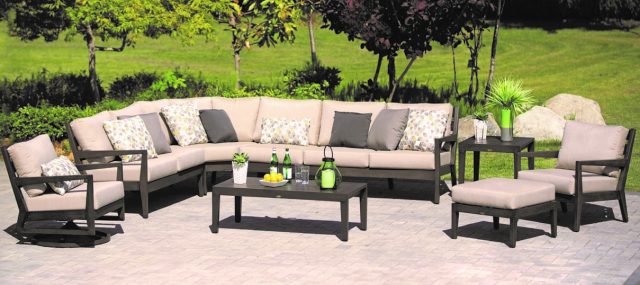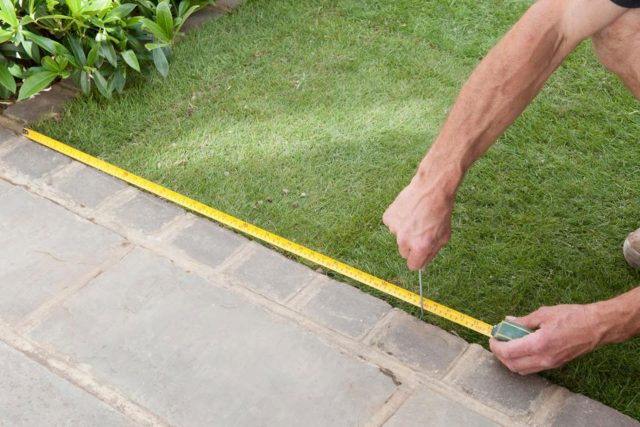How to Choose Quality Furniture for Your Outdoor Living Space

With people holed up indoors in the past two years, home decor trends have come to a surge. These include maximizing outdoor spaces for daily living and holding socially distanced gatherings. Some even installed playsets in their backyards or started container gardening to beat boredom and isolation at home.
Whatever you use your outdoor living space for, it's important to keep it equipped with furniture that increases its functionality. Hence, when looking for pieces, consider crucial factors like usefulness, convenience, and durability, in addition to basics like price, material, and size.
Unlike indoor furniture, outdoor furniture is not protected by enclosed walls, so they are built with specific features that help them combat environmental elements.
Here are some things to keep in mind before you start shopping.
1. Consider the weather in your location

Is the weather in your area dry and hot, or do you reside near the ocean? Does it rain frequently? Do you get a lot of intense sunlight? These are critical questions to ask because outdoor exposure can be harsh on furniture.
For instance, hot, dry weather can cause wood to split and crack, while regular dampness can lead to rot. Strong winds can damage aluminum furniture; iron will not be blown away but cannot withstand salty air. The sun is among the worst offenders. It dampens and discolors paint, bleaches textiles and wood, and destroys plastic and other synthetic materials.
2. Choose the right material
After determining your location's weather, be practical and consider the material's intrinsic qualities. Metal is typically unaffected by sunlight. Meanwhile, plastic and rubber are more susceptible to UV damage, especially at high altitudes.
Similarly, wood furniture may come with a factory-applied, weather-resistant finish. Still, that finish will eventually fade and break down, and you'll have to choose between refinishing the wood or replacing the furniture. Teak is a good material for outdoor furniture since it is sturdy and known for its ability to withstand outdoor exposure.
In addition, the furniture components should be made of high-quality, durable materials. Consider quick-dry foam to keep cushions from becoming moldy and UV-protected fabrics that are less prone to fading. It also helps to visualize how the furniture will look five to ten years later.
3. Keep things neutral
Opt for products with neutral colors and textures. Fabrics can be particularly difficult to choose because there are so many options. It's better to stick to a neutral color scheme to ensure that your key pieces remain timeless. And as the seasons and trends change, it will be easier to update your furniture with scatter cushions, blankets, and mats.
4. Identify what you need
What are your plans for your outdoor area? Will you utilize it for frequent family gatherings, outdoor entertaining, or simply lounging? The items you'll need will be determined by how you want to use the area.
For example, a classic outdoor dining set will be ideal if you intend to eat outside. If you plan to host outdoor gatherings, modular furniture may be your best bet since sectionals can be adjusted to provide more seating area, surface table, or resting space. If you want to spend most of your time outside relaxing and enjoying nature, you can prioritize large, comfy chairs over large tables.
5. Measure your outdoor area

Determine how much area you will work with. Outdoor furniture should be installed with care, considering factors such as the amount of sun exposure and the ease of entry and egress (especially if you'll be carrying food across the yard!).
Measure your available space and operate within it. Don't worry if you're working with a limited amount of space: there are many ways to maximize the area. A circular table, for instance, takes up less space, while a smaller café-style set can seat more people than traditional dining furniture.
6. Pay attention to comfort
You'll be relaxing on your patio furniture and will likely spend more time here apart from your living room, so you should make it comfortable. If your chairs or lounges do not come with cushioning, you can always buy separate sets or sew your own. Choose a high-quality, heavy-duty fabric that is fade- and mildew-resistant.
When purchasing cushions, remember that well-taken-care-of furniture itself can outlast any upholstery, and you'll most likely need to replace the pillows one or more times during the lifespan of your furniture. Furniture and linens will look their best if stored properly when not in use. If possible, put them away after each use, but always keep them out of the elements during the off-season.
Chaise lounges, rockers, and recliners, in addition to comfortable seats, are ideal for lounging outside. Make sure to test out your furniture before purchasing it to measure comfortability. If you want a unique approach, consider hammocks and day beds instead of the usual seats.
7. Weigh the price
The question “how much?” falls into two categories: How many items are needed and how much money are you willing to spend?
Consider your budget; there are choices for nearly every price range. Quality and comfort will need a higher initial investment, but you will most certainly enjoy the pieces for many seasons to come. You should also consider the maintenance costs since the expenses for things like professional steam cleaning and reapplication of protective coatings can pile up in the long run.
8. Save adequate room for storage
Ensure you have enough space to keep away your outside furniture for the winter season. If you can't move everything inside, store the cushions and other fabric components.
Even furniture covers aren't always enough protection, particularly for materials like rattan. Save some room for your furniture or get pieces that can be used indoors during the colder months. You can also opt for outdoor furniture that folds down if you have limited storage space.
Final Thoughts
Outdoor living spaces are essential features of a home. Not only do they increase curb appeal, but they also allow homeowners to make the most of their property.
It's crucial to select appropriate furniture pieces and pay attention to their upkeep to keep your outdoor space livable and functional. Moreover, be sure to clean them regularly to remove dirt and dust. Also, when they get wet, rinse and dry them immediately to prevent damage.
You can use the tips above as a guide to help you thoughtfully plan and make a wise purchase when looking for the best outdoor furniture for your home. Be on your way to creating the best lounging area for your space!


